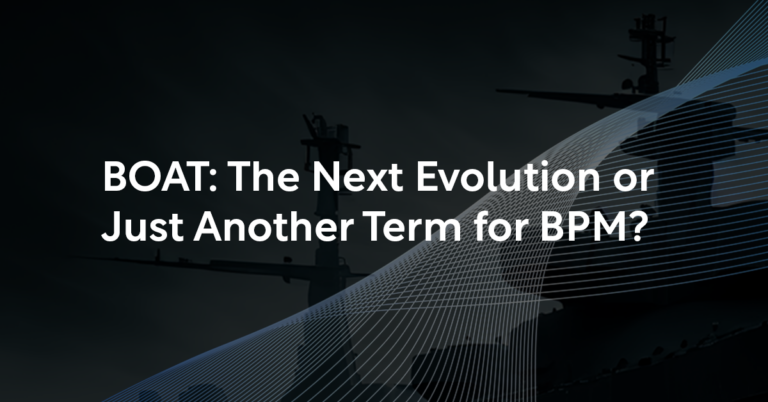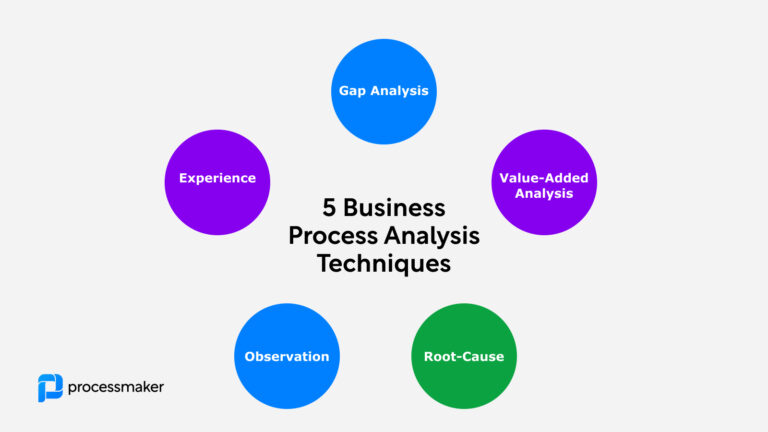Gartner’s introduction of Business Orchestration and Automation Technology (BOAT) seems to mark a significant moment in the landscape of enterprise automation. But is it really a groundbreaking development, or just another buzzword that might fade away before gaining traction? Let’s take a deeper dive to explore whether BOAT represents a fundamental shift in automation or if it’s simply a rebranding of existing technologies.
The Crux of the Matter
The debate about BOAT’s significance boils down to two key questions:
- Is there genuinely something new happening in the process automation industry? Are we witnessing more convergence now than ever before between adjacent categories like Robotic Process Automation (RPA), Integration Platform as a Service (iPaaS), Low-Code development, and Business Process Management (BPM)? If so, what’s driving this change? Is it the influence of Generative AI, as is often the case with many tech innovations today?
- Why create a new term if something is indeed different? Why not just use the existing category of BPM? BPM has traditionally focused on integrating different technologies to facilitate process orchestration. So, why reinvent the wheel? Couldn’t we just rejuvenate BPM and reignite interest in it?
Why BOAT Should Be Considered a New Concept
Let’s take a moment to support and explore Gartner’s perspective—why BOAT is both a new concept and deserving of its own name.
1. Integration of Diverse Technologies:
BOAT isn’t just about managing processes; it integrates multiple technologies into a cohesive framework. By combining BPM, iPaaS, RPA, Generative AI, and Low-Code capabilities, BOAT offers a more holistic solution for businesses. This fusion is designed to handle complex workflows and deliver adaptive, intelligent automation. It’s not just about running processes—it’s about orchestrating them with a greater level of sophistication.
2. Focus on End-to-End Orchestration:
While BPM has always focused on end-to-end orchestration, it hasn’t typically assumed that a single BPM engine would handle every action along the way. BPM solutions manage human tasks and allow for integrations through connectors, scripts, and bots, but often involve multiple vendors to deliver a complete solution. BOAT, on the other hand, implies a more integrated approach, where businesses can meet approximately 80% of their automation needs out of the box, minimizing the reliance on multiple, disparate systems.
3. Embedded AI and Intelligence:
AI integration is becoming ubiquitous across all tech categories. We’ve seen iPaaS demonstrations where Generative AI builds integration flows from text descriptions, and similar capabilities are emerging in RPA and BPM solutions. Most Low-Code platforms now include AI-driven script writing assistants. BOAT explicitly makes AI a core component, indicating its pivotal role in modern automation.
4. Adaptability and User Experience:
BOAT emphasizes providing a connected, adaptive experience that can easily adjust to changing business needs. This adaptability offers more flexibility than traditional BPM, which often requires significant IT involvement for adjustments, thus making BOAT more user-friendly and responsive.
Why BOAT Might Not Be a New Concept
Despite the compelling arguments for BOAT, there are points open to dissect and debate.
1. Overlap with Existing Technologies:
Some may suggest that BOAT is an interesting repackaging of existing technologies. BPM systems have evolved to include features like RPA and AI, while iPaaS solutions already offer seamless integration capabilities. Therefore, the novelty of BOAT could be perceived as more of a marketing strategy than a genuine technological innovation.
2. Orchestration Isn’t New:
The concept of orchestrating business processes is not unique to BOAT. BPM and other enterprise solutions have focused on end-to-end process orchestration for years. The unified orchestration that BOAT promotes might feel familiar to those already implementing advanced BPM and automation strategies.
3. Existing Platforms Already Meet BOAT’s Goals:
Many existing business process automation platforms already deliver the capabilities that BOAT aims to provide. Businesses may argue that they are on the path BOAT outlines, using integrated BPM, RPA, AI, and Low-Code solutions they’ve already deployed, albeit not as integrated and cohesive as BOAT proposes..
4. The Composability Debate:
Gartner’s stance on technology platforms has evolved. Several years ago, Gartner shifted focus from monolithic platforms to composable, API-first architectures that offered greater flexibility. This shift was a response to the demand for modular, lightweight solutions rather than heavy, all-encompassing platforms. As market and customer needs change over time, BOAT might be viewed as yet another shift back toward platform-centric thinking.
5. The AI Factor:
AI is undeniably transforming industries, much like the initial internet boom of the late ’90s and the Web 2.0 movement of the 2010s. In process orchestration, AI has made it easier to build processes, enabling users to describe or draw a process, which AI can then model and implement. While BOAT emphasizes AI’s role, this trend is central and not unique to BOAT given this is a much broader industry shift.
A Helpful Market Strategy Catalyzed by Gartner
Here’s a thought: What if Gartner’s introduction of BOAT is as much about identifying a new technological advancement as much as challenging and reshaping the market landscape?
As technology evolves, the distinctions between BPM, RPA, iPaaS, and other automation tools are clearly blurring. RPA vendors are expanding into API connectivity, iPaaS platforms are incorporating human workflow management, and Generative AI is handling tasks traditionally associated with RPA, like document extraction. The boundaries are eroding, making it difficult to categorize these capabilities under one label without favoring a specific technology.
By unveiling BOAT, Gartner is helping to create a new category that allows all these technologies to reposition themselves. It’s a clever move that encourages vendors to innovate and compete within a newly defined space, rather than being pigeonholed as part of a “dying” category. For example, RPA, once seen as cutting-edge, is now viewed by some as a stopgap solution. BOAT provides a fresh framework that enables these technologies to present themselves as part of a forward-looking narrative.
Conclusion
BOAT, as introduced by Gartner, aims to consolidate various modern technologies into a unified framework that promises increased efficiency and adaptability. While it may not introduce entirely new concepts, its emphasis on integration and end-to-end orchestration can offer significant value, particularly for organizations grappling with fragmented automation strategies.
Some might interpret the creation of BOAT as an intelligent, strategic move to blur the lines between technologies and invigorate the market. By doing so, Gartner provides a platform for existing vendors to rebrand and avoid becoming obsolete. Whether BOAT represents a genuinely new concept or is simply a rebranding effort, it will undoubtedly spark discussion, drive competition, and inspire innovation in the rapidly evolving world of business automation.






